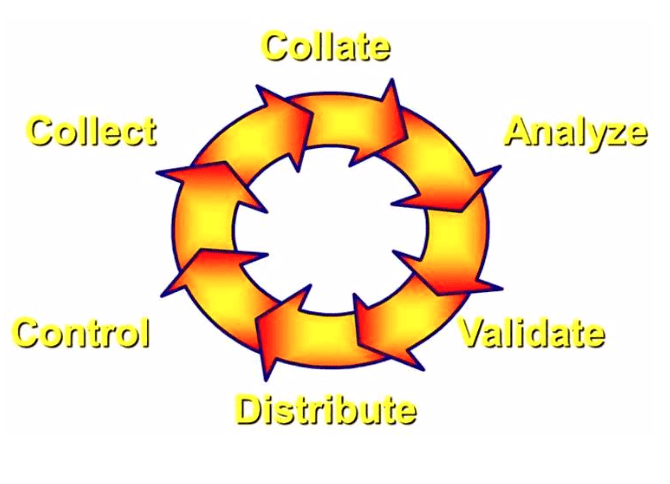
Guest Post by Geary Sikich (first posted on CERM ® RISK INSIGHTS – reposted here with permission)
Merriam Webster Dictionary defines reputation as:
1a: overall quality or character as seen or judged by people in general
b: recognition by other people of some characteristic or ability has the reputation of being clever
2: a place in public esteem or regard: good name; trying to protect his reputation
Google Dictionary:
the beliefs or opinions that are generally held about someone or something.
“his reputation was tarnished by allegations that he had taken bribes”
a widespread belief that someone or something has a particular habit or characteristic.
“his knowledge of his subject earned him a reputation as an expert”
Reputation is an intangible that, in the cyber era, is tenuous, at best. With the explosion of Social Media today, can you actually get a rendering of what is being said about you, your organization, etc. so as to enable you to protect your reputation? Or, is it just too much and too overwhelming due to the velocity of information that exists today?
Reputation Risk Management
Can you apply risk management techniques to reputation management? The simple answer is, yes. You can do a risk assessment – identify the risk(s), assess the probability, impact and prioritize resources against the risk(s) that have been identified. You end up with a version of a “Heat Map”. Useful, perhaps.
A framework needs to be established that allows you to “Horizon Scan” for the tidbits of information that are out there that may impact your reputation – either positively or negatively. This is much the same as setting up and intelligence gathering network as depicted below.
In an article published on 22 April 2016, by Wil Batrleman, entitled, “Reputation Management in a Digital Era”, (https://brightpast.com/reputation-management-in-a-digital-era/)three points are made that remain relevant still:

Start Managing Your Reputation Early
A key step to properly managing your company’s online reputation is to start early, ideally before your company even “exists”. By taking a careful look at search results and social media chatter surrounding keywords associated with your business, you should be able to gauge what sort of steps you’ll need to take to ensure a positive online presence for your company. Are other businesses already dominating the social media space around your branding? You may want to consider adjusting your branding accordingly, both to avoid consumer confusion, and potential copyright infringement action. If not, it will be important to quickly establish a social media presence for your company.
Be Active in Social Media
For many consumers, social media is a key point of contact for businesses they interact with. It’s accessible to them, and a method of communication they’re likely to already be using daily. Being active and attentive on a variety of social media platforms will allow you to not only keep in touch with your customers, but also to catch wind of trouble early on. Negative reviews and feedback can often turn into positive PR if addressed quickly and handled properly. Many customers post their frustrations simply as a way to vent. Receiving actual assistance from the business they thought was too big to notice them is a great way of building loyalty among your consumer base.
Consider All Aspects of Your Online Reputation
Social media is a big part of your online reputation, but it isn’t the only part. There are other aspects of your reputation that aren’t as easily managed by you or your employees. More esoteric concerns, such as search engine optimization, can be more difficult to manage. Addressing customer complaints sent directly to you through social media is easy enough, but finding upset and frustrated consumers on the wide variety of third party review sites can be far more difficult. Depending on the size of your business, these sorts of reputation management tasks can be nearly impossible to tackle alone.
In another article, entitled, “Sense, Mesh and Transform: The 3 Critical Mindsets for 21st Century Leaders”, published on 24 June 2018 (http://thefuturesschool.com/blog/sense-mesh-and-transform-the-3-critical-mindsets-for-21st-century-leaders/) the use of Causal Layered Analysis (CLA) is presented. While the focus of the article is on helping leaders develop a new vision for their industry, the three elements: Sense, Mesh and Transform can be readily applied to help you assess potential threats to your reputation. A summary of these is provided below:
Shift 1: Sense
Honing the skill of sense-making and pattern recognition (the art of creating a mosaic in intelligence terms) enables us to understand and leverage the world emerging around us. “Horizon Scanning” is one of the tools that can be used to facilitate pattern recognition and enable sense-making.
Shift 2: Mesh
Information often end up in siloes that appear to be unrelated. One of the things necessary in reputation management is to perforate these information siloes and begin to recognize how seemingly unrelated information can actually lead us to a clearer mosaic that we can better analyze.
Shift 3: Transform
Transformational thinking and invention move us away from short-term thinking to long-term vision.
Another good read is “The Essentials: Online Reputation Management FAQs”, by Reputation Communications Staff, 1 April 2019 (Online reputation management). The authors provide information on 10 Ways Online Reputation is Used (10 Ways Online Reputation Management is Used). Here are some highlights from the article:
“Online Reputation Management (ORM) involves placing new content online that pushes old or unwanted content lower in search results. It can also raise other online content higher to displace unwanted material. Once successfully arranged, the results must be maintained. Otherwise, the unwanted material may resurface at the top of Google search results — usually within three to six months.”
The key challenge of ORM is to create content that search engines will rank highly, according to the authors.
Conclusion
Managing your online and offline reputation in today’s fast paced and loosely controlled social media environment is an ongoing challenge for all of us as individuals; and our organizations when it comes to perspectives of the potential viewers of our information.
Once information is on the Internet it is virtually unbounded, freedom in time is created. In order to protect your reputation, you have to:
- Manage your digital footprint – monitoring, maintenance and repair.
- Educate yourself about Social Media
- Keep abreast of regulations
- Develop a reputation protection checklist
It’s your reputation, whether as an individual or as an organization. Be vigilant.
About the Author
Geary Sikich – Entrepreneur, consultant, author and business lecturer
Contact Information: E-mail: G.Sikich@att.net or gsikich@logicalmanagement.com. Telephone: 1- 219-922-7718.
Geary Sikich is a seasoned risk management professional who advises private and public sector executives to develop risk buffering strategies to protect their asset base. With a M.Ed. in Counseling and Guidance, Geary’s focus is human capital: what people think, who they are, what they need and how they communicate. With over 30 years in management consulting as a trusted advisor, crisis manager, senior executive and educator, Geary brings unprecedented value to clients worldwide.
Geary is well versed in contingency planning, risk management, human resource development, “war gaming,” as well as competitive intelligence, issues analysis, global strategy and identification of transparent vulnerabilities. Geary began his career as an officer in the U.S. Army after completing his BS in Criminology. As a thought leader, Geary leverages his skills in client attraction and the tools of LinkedIn, social media and publishing to help executives in decision analysis, strategy development and risk buffering. A well-known author, his books and articles are readily available on Amazon, Barnes & Noble and the Internet.
References
https://reputation-communications.com/article/the-essentials-online-reputation-management-faqs/
“An Attorney’s Advice for Removing Negative, Defamatory and Infringing Material from the Internet,” by Christine Rafin, Esq., provides insight into what is possible. (Her companion piece, ““Legal Options When Battling Online Copyright Infringement”, is also helpful.) “What to Do When You Are the Victim of Online Defamation”, provides additional overviews of your options.
“Risk and the Organizational Mindset: Learn to Think like a Commodities Trader” (Continuity Central)
Apgar, David, Risk Intelligence – Learning to Manage What We Don’t Know, Harvard Business School Press, 2006.
Sikich, Geary W., ““Transparent Vulnerabilities” How we overlook the obvious, because it is too clear that it is there” 2008
Sikich, Geary W., “Risk and the Limitations of Knowledge” 2014
Taleb, Nicholas Nassim, “The Black Swan: The Impact of the Highly Improbable,” 2007, Random House – ISBN 978-1-4000-6351-2, 2nd Edition 2010, Random House – ISBN 978-0-8129-7381-5
Taleb, N.N., “Common Errors in Interpreting the Ideas of The Black Swan and Associated Papers;” NYU Poly Institute October 18, 2009
 Ask a question or send along a comment.
Please login to view and use the contact form.
Ask a question or send along a comment.
Please login to view and use the contact form.
Thank you for highlighting the importance of managing reputation risk in the cyber era! I hadn’t considered how online threats, like data breaches and social media crises, can seriously impact a brand’s image. This information really underscores the need for strong cybersecurity and proactive reputation management. So helpful!